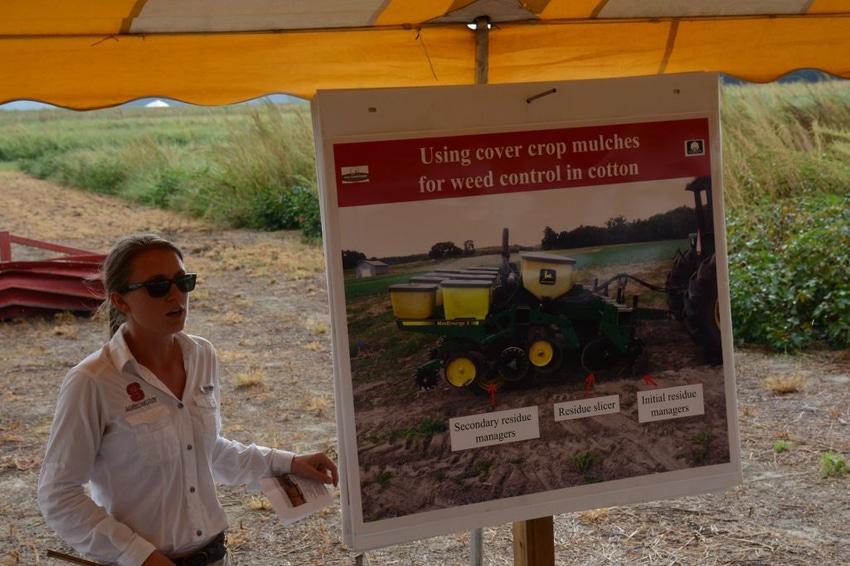
With herbicide-resistant Palmer amaranth becoming an ever increasing problem, cotton farmers are looking for non-chemical methods to control their number one weed worry. Cover crops may be one tool that delivers results.
Researchers at North Carolina State University are looking at the effect of a cereal rye/crimson cover crop mulch on cotton emergence, soil temperature, soil moisture, weed suppression and cotton yield in conventional and organic weed control scenarios at three locations across North Carolina.
“While cover crops historically have been recognized for some of their longer term benefits like soil erosion reduction or nutrient recycling enhancement, there are some short term tangible benefits you can get from winter cover crops in the following cotton crop like weed suppression and soil moisture conservation,” explained Rachel Atwell, a graduate assistant in the Department of Crop Science at N.C. State.
Atwell is working on the project with N.C. State Crop Science Professors Chris Reberg-Horton, Keith Edmisten and Alan York. She discussed the research at the Cotton Field Day held Sept. 15 in Rocky Mount.
The research began at the Upper Coastal Plain Research Station in Rocky Mount and the Peanut Belt Research Station in Lewiston-Woodville in 2014-2015. For this year, an additional site was added at the Central Crops Research Station in Clayton.
“When herbicides were used in combination with the cover crop mulch, excellent weed control was observed,” Atwell said of the 2015 results. “Results from this experiment indicate that respectable cotton lint yield can be achieved when combining the use of a cover crop mulch removed from the cotton row and herbicides.”
Atwell noted that a yield increase was observed when a cover crop mulch was used but absent from the cotton row. “This is likely attributed to soil moisture conservation throughout the growing season by the cover crop mulch, an often overlooked short-term benefit of using cover crop mulches,” she explained.
Cereal rye was used because it is a high biomass producing cover crop. Crimson clover was used to see if it the weed suppression in crimson clover could actually fertilize the rye to build up a little more cereal rye biomass. The cover crop mixture was planted in mid-October using at 120 pounds per acre for cereal rye and 10 pounds per acre for crimson clover.
“Cover crops were terminated one week prior to cotton establishment using a roller-crimper without a herbicide application or a herbicide application without roller crimping,” Atwell explained.
Herbicide treatments included Warrant (3 pints per acre) plus Cotoran (1.5 pints per acre) plus Reflex 12 ounces per acre) applied pre-emergence. “Post herbicide applications of Roundup at 40 ounces per acre plus Liberty at 40 ounces per acre were made as necessary,” Atwell said.
“Excellent weed control was observed across all cover crop treatments when herbicides were used in conjunction with the cover crop mulch for weed suppression. Soil temperature was reduced by all treatments with a cover crop. Soil moisture availability was enhanced by the presence of a cover crop throughout the growing season,” she said.
About the Author(s)
You May Also Like






